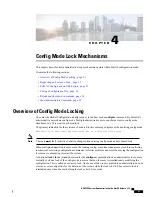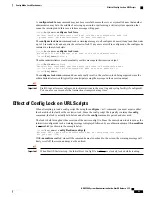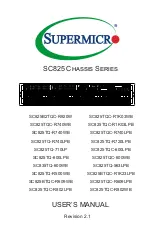
•
The system can send SNMPv1, SNMPv2c, or SNMPv3 traps to numerous target devices. However, an
EMS may only process SNMP version 1 (SNMPv1) and SNMP version 2c (SNMPv2c) traps. If the
SNMP target you are configuring is the EMS application, use the
snmp target
command to configure
use of version 1 or version 2c. Issue this command as many times as you need to configure multiple
targets. If you configure multiple targets, generated alarms are sent to every configured target.
•
The
snmp notif-threshold
command configures the number of SNMP notifications that need to be
generated for a given event and the number of seconds in the monitoring window size (default = 300),
before the notification is propagated to the SNMP users (default = 300).
•
The
snmp engine-id local
command is optional. It is only required if your network requires SNMP v3
support. The engine ID uniquely identifies the SNMP engine and associated SNMP entities, thus providing
a security association between the two for the sending and receiving of data.
•
The
snmp user
name is for SNMP v3 and is optional. There are numerous keyword options associated
with this command.
•
Use the
snmp mib
command to enable other industry standard and Cisco MIBs. By default only the
STARENT-MIB is enabled.
•
By default SNMP runtime debugging always runs and consumes CPU cycles for event logging. To
control CPU usage you can set
no snmp runtime-debug
to disable runtime debugging. An option to
this command allows you to specify SNMP token values that will locate and parse specified MIBs.
SNMPv3 traps may not be supported by some EMS applications.
Important
Verifying SNMP Parameters
Step 1
Run the
show snmp server
command to verify that the SNMP server information is correctly configured. The following
displays a sample output of this command.
SNMP Server Configuration:
Server State
: enabled
SNMP Port
: 161
sysLocation
: chicago
sysContact
: admin
authenticationFail traps : Enabled
EngineID
: 123456789
Alert Threshold
: 100 alerts in 300 seconds
Alert Low Threshold
: 20 alerts in 300 seconds
SNMP Agent Mib Configuration:
STARENT-MIB : Enabled
IF-MIB : Disabled
ENTITY-MIB : Disabled
ENTITY-STATE-MIB : Disabled
ENTITY-SENSORE-MIB : Disabled
HOST-RESOURCES-MIB : Disabled
CISCO-MOBILE-WIRELESS-SERVICE-MIB : Disabled
CISCO-ENTITY-DISPLAY-MIB : Disabled
ASR 5500 System Administration Guide, StarOS Release 21.5
63
Management Settings
Verifying SNMP Parameters
Содержание ASR 5500
Страница 100: ...ASR 5500 System Administration Guide StarOS Release 21 5 74 System Interfaces and Ports VLANs and Management Ports ...
Страница 136: ...ASR 5500 System Administration Guide StarOS Release 21 5 110 Smart Licensing Smart Licensing Bulk Statistics ...
Страница 140: ...ASR 5500 System Administration Guide StarOS Release 21 5 114 Monitoring the System Clearing Statistics and Counters ...
Страница 260: ...ASR 5500 System Administration Guide StarOS Release 21 5 234 Routing Viewing Routing Information ...
Страница 278: ...ASR 5500 System Administration Guide StarOS Release 21 5 252 BGP MPLS VPNs VPN Related CLI Commands ...
Страница 292: ...ASR 5500 System Administration Guide StarOS Release 21 5 266 Session Recovery Sample Output for show rct stats verbose ...
Страница 324: ...ASR 5500 System Administration Guide StarOS Release 21 5 298 Interchassis Session Recovery Fallback Procedure ...
Страница 338: ...ASR 5500 System Administration Guide StarOS Release 21 5 312 Engineering Rules ECMP Groups ...
Страница 362: ...ASR 5500 System Administration Guide StarOS Release 21 5 336 StarOS Tasks Management Processes ...








































